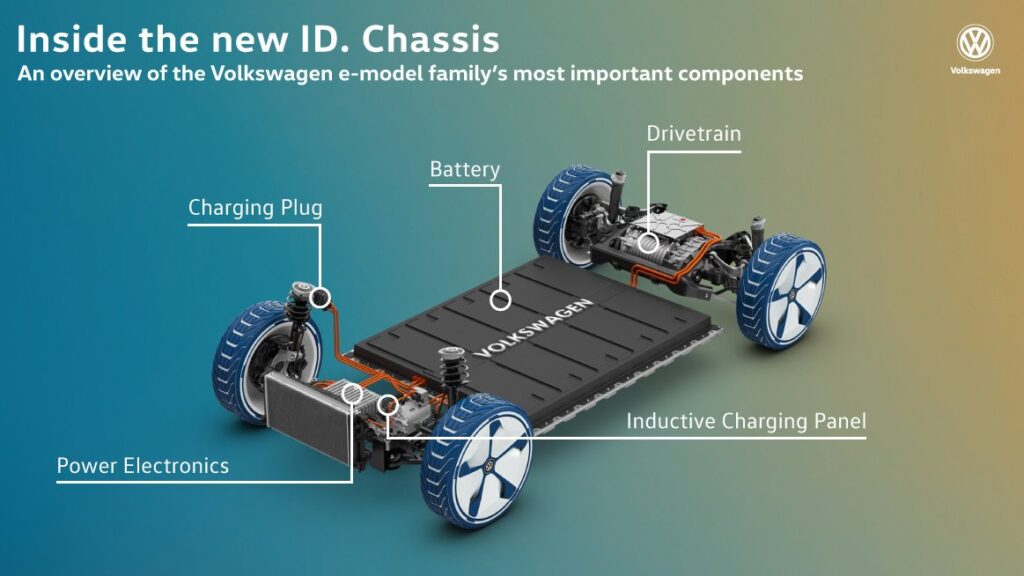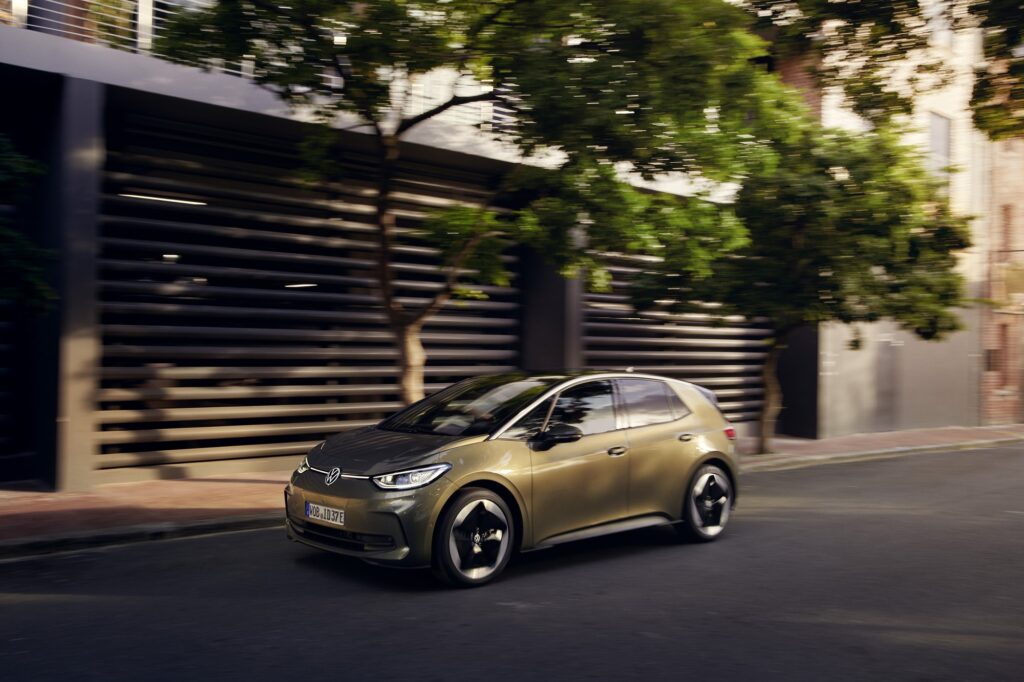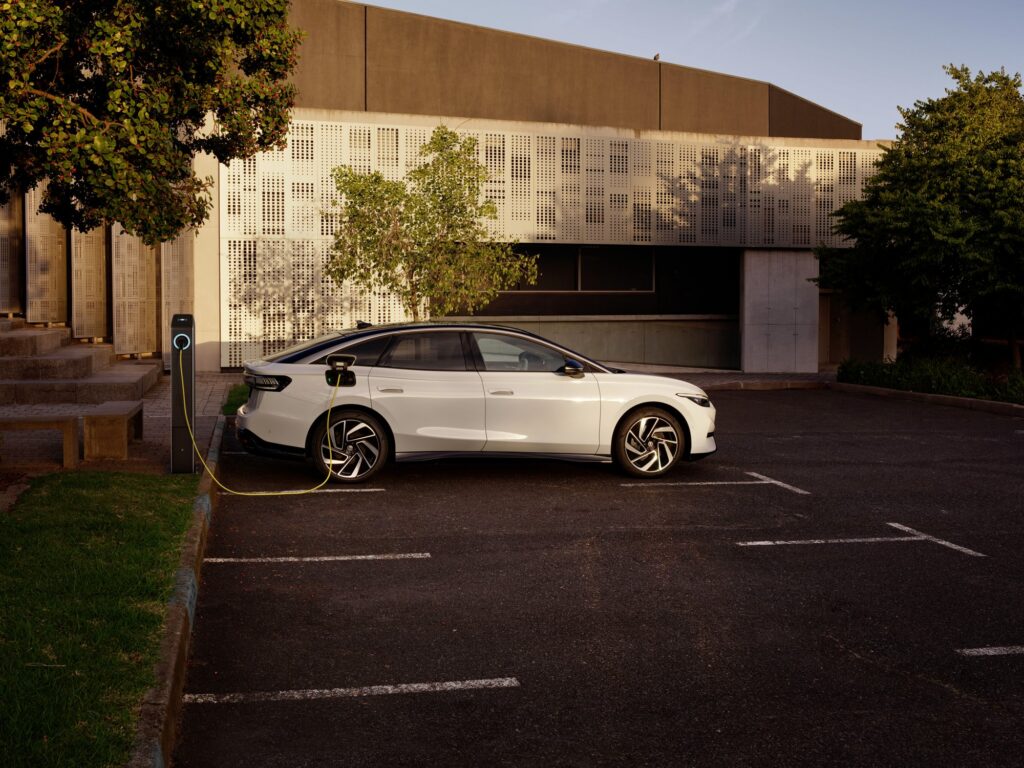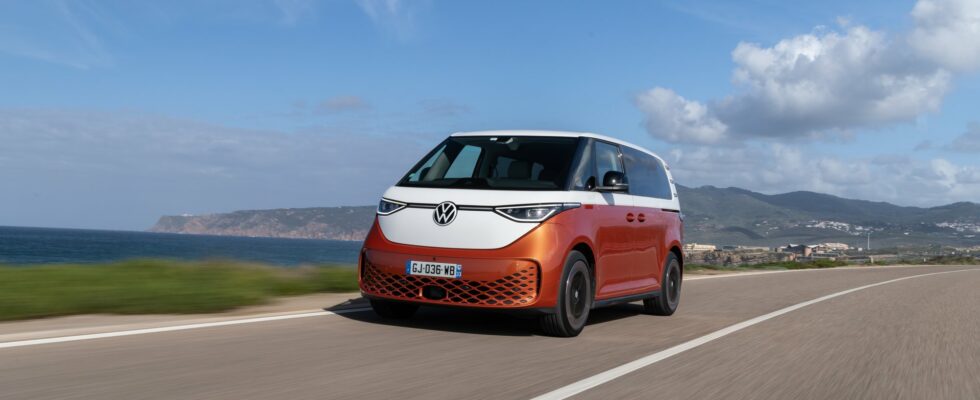Since the advent of the electric car, one of the main concerns of buyers remains autonomy. And Volkswagen understood this very early. It must be said that the manufacturer already has 10 years of experience in the electric sector with an e-Up! released in 2013.
If the range of Volkswagen electric cars has since expanded, from the compact (ID.3) to the SUV (ID.4 and ID.5) via the van (ID.Buzz) and now the sedan (ID.7 ), autonomy remains at the heart of the German brand’s concerns. How ? Thanks to technologies that have been refined over the years. Enough to offer the customer an ever-increasing range of action and optimized consumption. This is the best way to support this transition to electric.
From the very design of the car to recharging, including tools that accompany everyday life, here is how Volkswagen continues to innovate in the direction of autonomy.
Modular platform and battery configurations
At Volkswagen, electric cars are based on a real Swiss army knife called MEB. What is it about ? A so-called “modular” platform specifically developed for the brand’s electric vehicles. It’s the architecture of the car. The manufacturer started from a blank page to optimize all the aspects offered by electric, with a chassis that integrates the batteries into the floor, has high-voltage charging and places the engine at the rear.

If the advantages of this platform are multiple (optimization of interior space for example), the possibility of placing the components in the most appropriate places makes it possible in particular to lower the center of gravity of the vehicle and to have better weight distribution. . This promotes both driving dynamics and autonomy.
As for the word “modular”, it is very important. The Volkswagen electric vehicle platform makes it possible to adapt to customer needs. Not only does it adapt to the different body types (SUV, sedan, etc.) in the range and makes the most of their intrinsic characteristics. But in addition, depending on the desired autonomy, vehicles can integrate a battery made up of more or fewer modules. The same ones that contain the lithium-ion cells.


Driving modes and regenerative braking
To optimize autonomy, electric Volkswagens can also count on numerous tools. Starting with the driving modes that adapt to situations. Eco, Comfort, and Sport are all configurations which affect different parameters (throttle response, steering stiffness, air conditioning, etc.) and therefore on the character of the car. Do you prefer a more responsive or more comfortable ride? As for Eco mode, as its name suggests, it is responsible for optimizing these parameters to reduce consumption. And therefore increase autonomy.
To this must be added the regenerative braking of Volkswagen electric vehicles. This technology transforms the kinetic energy of braking into electrical energy. And to further maximize this recovery, Volkswagen is one of those which have opted for so-called “one-pedal” driving. Once the function “B” for “ Brake » (brake in English) engaged at the gear selector, simply take your foot off the accelerator to slow down until the vehicle comes to a complete stop. Which is very practical for city driving.


Fast charging and battery life planner
All electric Volkswagens are compatible with high-power charging, integrating the Combo 2 CCS socket. This means that when you travel, you can use the most powerful charging stations, reducing downtime. Depending on your model, maximum charging powers can reach up to 170 kW, as on the new ID.3 (charge from 5 to 80% in 30 minutes). Even up to 200 kW on the new ID.7.
In addition, Volkswagen also offers the mode Battery Care. By activating it, it ensures that you do not exceed 80% recharge, as is often recommended, in order to optimize the life of the battery. And in fact, do not degrade the overall autonomy of the car.


In order to optimize their charges when necessary, electric Volkswagens are also equipped with an intelligent route planner integrated into the GPS. This allows, by selecting your destination, to display the necessary stops on the journey, the time of arrival at the terminal, and the time needed to recharge in order to continue the route peacefully.
Remote software updates
If zero-emission Volkswagens include many functions to optimize daily autonomy, they can still improve over time. And this thanks to remote updates. Understand that even without having to go to your dealership, your car can improve. Or by optimizing the car’s already existing functions. Or by adding new functions.
And as was the case recently with the ID.3.0 software update, charging and energy management can be improved: thus without customers having to do anything, they were able to benefit from ‘better charging power for their vehicle. Reducing cooldown. At the same time, a new charging menu appeared on the car’s screen, allowing quicker and more intuitive access to settings.


All these technologies which promote autonomy are already found in Volkswagen’s electric range. A range which already includes seven models with very different bodywork and features, for ranges of up to 620 km. If the little e-Up! displays a starting price of 28,030 euros, the ID.3 and ID.4 can also claim the 2023 bonus. We are now expecting the arrival of one of the first electric station wagons on the market in 2024 with the ID.7 Tourer.
This is content created by independent writers within the Humanoid xp entity. The Numerama editorial team did not participate in its creation. We are committed to our readers to ensure that this content is interesting, qualitative and corresponds to their interests.
